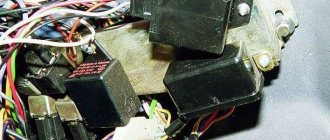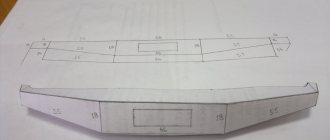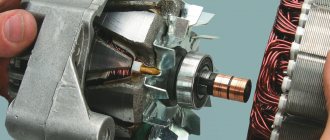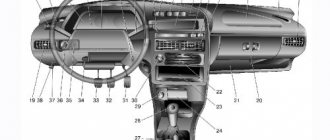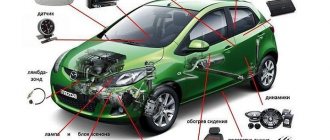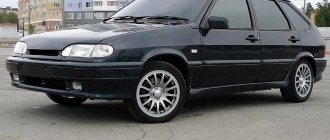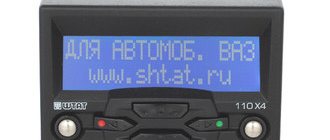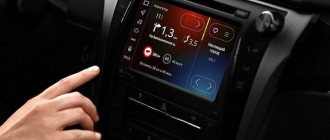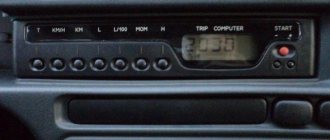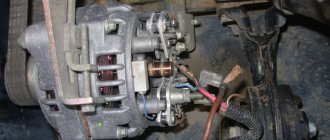Popping noises in the muffler are a very unpleasant manifestation of engine malfunction. This “illness” is more typical for carburetor units and clearly indicates a problem with the gas distribution or ignition systems.
Shoots at the muffler - check the carburetor!
Often it is not possible to immediately figure out why the muffler is shooting. Contrary to the popular belief that the culprit is a violation of the valve timing, there may be other reasons for this behavior of the engine. Before you begin troubleshooting the “engine” that led to shooting in the car’s muffler, you should understand the nature of this phenomenon. A loud shot indicates that a flammable mixture is igniting in the exhaust system.
First of all, you should check the condition and settings of the carburetor, as well as the air filter. As practice shows, quite often an over-enriched fuel mixture, experiencing a lack of air, does not burn in full during the compression stroke and is partially transferred to the exhaust manifold and further to the muffler. When gasoline accumulates in a closed space at high temperatures, it ignites.
The troubleshooting algorithm is simple:
- We disassemble the air filter and change the filter element;
- We check the fuel supply adjustments on the carburetor.
Adjusting the thermal gap when popping in the muffler
As soon as interruptions in engine operation begin, experienced and novice drivers try to test it in operation under different loads. If you hear popping noises in the muffler at idle, medium and high speeds, then there is a high probability of poor adjustment of the thermal clearance of the cylinder head valves. The fact that it is necessary to take out equipment to adjust the valves may be indicated by the appearance of popping noises after the engine warms up.
The camshaft pushers or cams must have a thermal clearance at the point of contact with the valve stem. After heating, the metal parts heat up and increase in size, which leads to a decrease in this gap.
When adjusted correctly, the valve disc always fits very tightly into the seat. If there is no thermal gap, then the valve is not able to completely close the gap. At the moment of the compression stroke, the fuel mixture partially exits through a small gap into the exhaust manifold, where it ignites. Unpleasant pops can be “treated” by simply adjusting the thermal clearance of the cylinder head valves.
Late ignition is the cause of shots in the muffler
Late ignition of the fuel mixture in the combustion chamber can also be the reason why shots are fired into the muffler. This is due to incorrect ignition settings. At the moment of overcoming the top dead center (TDC) on the compression stroke, a spark should appear between the contacts of the spark plug, which ignites the fuel mixture.
If the ignition is slightly delayed, then ignition occurs when the piston moves downwards at full speed, completing the power stroke. At this point, the exhaust valve begins to open. At the moment of ignition, the fuel mixture rushes into the exhaust manifold and causes a pop.
Advice to motorists - take care of the engine
Shots in the exhaust pipe are a consequence of lack of control and violation of engine adjustments. The popping sounds themselves only indicate the need to check the fuel system, gas distribution and ignition. If this is not done immediately when unpleasant “symptoms” appear, then you can completely ruin the engine.
It is at such moments that there is a high probability of damage to the valves, exhaust system, and even a car fire. There is also a positive aspect in that the engine began to attract attention in this way. Finding the causes of the malfunction will inevitably force the driver to check the condition of the internal combustion engine systems, make the necessary adjustments and replace consumables.
shoot into the muffler on cars with both carburetor and injection engines. At the same time, oddly enough, the muffler itself has nothing to do with it. It is only a source of sound, and the factors causing loud sounds lie in completely different parts of the car. Most often, the causes of popping sounds in the muffler are malfunctions of the ignition system, fuel supply or gas distribution system. Next, we’ll figure out how to get rid of the problem when it shoots into the exhaust pipe , and what you need to pay attention to first of all during “explosions.”
Why does it shoot at the silencer?
The main reason that the engine shoots into the muffler is unburned fuel that has entered the exhaust system and ignited in it. The more gasoline leaks out, the louder the bang will be, and in some cases there may even be a whole series of “shots.” In turn, fuel can enter the exhaust system for various reasons. These could be malfunctions of the carburetor, timing belt, ignition system, various sensors (on injection machines) and so on.
The situation when someone shoots into the exhaust pipe can occur under different circumstances. For example, when over-accelerating, at idle speed of the engine or when relieving gas. As a rule, when there is a bang, a large amount of smoke . This malfunction is also accompanied by additional symptoms - loss of engine power, floating idle speed, increased fuel consumption. Let's look at the reasons why the muffler shoots in order, as well as methods for troubleshooting.
Popping sounds of injection engines
Popping noises when releasing gas from the muffler in carburetor engines occur more often than in injection engines, as practice shows. However, the injection system is still susceptible to this defect. It is worth noting that there are separate reasons for the occurrence of pops in the injection system.
In such cars, the engine's operation is controlled by the ECU, which controls based on a large amount of information received from various sensors. Naturally, false information from any of the sensors will lead to incorrect functioning of the entire system. For example, if false information is received from the air intake sensor, this will lead to an incorrect composition of the fuel-air mixture, as with carburetor engines. The problem will be the same, but its cause is slightly different.
Clogged air filter
One of the reasons why muffler pops is an incorrectly formed fuel mixture. To create it, you need gasoline and a certain amount of air. It enters the engine through a system that contains an air filter at the inlet. If it is clogged, it does not allow a sufficient volume of air to pass through it, so the result is a kind of “oxygen starvation” of the engine. As a result, gasoline does not burn completely , and some of it flows into the manifold and then enters the exhaust gas removal system. There the fuel heats up and explodes. Because of this, a kind of pop is produced in the muffler.
How to diagnose and what exactly needs to be checked?
First, you need to check the air filter located at the entrance to the exhaust system. If it is very dirty, it will have to be replaced, since the air filter cannot be cleaned. Problems can be avoided if you change the element on time.
If the carburetor is faulty, you need to check the gasoline chamber in which the float is located. The settings for all carburetors are individual, so the level is required in each case. The float should be level with the lid. Otherwise, the carburetor needs to be adjusted.
The float itself may show an incorrect value due to damage. For example, if this element has a hole, fuel penetrates inside it. Naturally, after this the readings will be incorrect.
When diagnosing, you need to check the spark plugs and replace failed elements. New spark plugs must have the same heat rating as the removed ones.
The cylinder head thermal clearance needs to be adjusted - if it is incorrect. The valves on all cylinders are manually adjusted when cold.
Problems with the timing belt can be resolved by tightening it or replacing it (if tightening does not produce results). But if there is significant wear, we definitely replace the toothed pulley. Worn valves can be sanded if they are scratched, or ground in if there are rough spots.
Shots in the muffler area occur regardless of the type of engine - be it an injector or a carburetor. They happen at idle and when the engine is warm. But this is only an external sign - behind it lies serious problems that need to be solved immediately.
Carburetor not tuned
Often the reason that the engine shoots into the muffler is an incorrectly configured carburetor. Its task is to create a fuel-air mixture, which is then supplied to the engine. If it is configured in such a way that the mixture is oversaturated with gasoline, a situation similar to that described above is created. The solution here is to check and adjust the “carb”.
The first step is to check the fuel level in the chamber where the float is located. Each carburetor is individually adjusted and has its own level. However, if its cover is removed, the float should be flush with the level of the cover. If this is not the case, adjust the level. Also be sure to check the integrity of the float . If it is damaged, fuel may leak into it, causing it to display the level incorrectly.
The reason that the carburetor shoots into the muffler may also be the jets. They are either configured incorrectly or become clogged over time. If the air jet does not supply enough air, the mixture becomes oversaturated with gasoline with the result described above. Often this malfunction occurs when the engine goes from idle to higher speeds, or with a sharp increase in speed (acceleration). It is necessary to check the condition of the jets and clean them if necessary.
| Air/fuel ratio | Description | A comment |
| 6/1 — 7/1 | Extremely rich mixture. Ignition failure. | Rich mixture. Long burning, low temperature. |
| 7/1 — 12/1 | Overrich mixture. | |
| 12/1 — 13/1 | Rich mixture. Maximum power. | |
| 13/1 — 14,7/1 | Slightly enriched mixture. | Normal mixture. |
| 14,7/1 | Chemically ideal ratio. | |
| 14,7/1 — 16/1 | Slightly lean mixture. | |
| 16/1 — 18/1 | Poor mixture. Maximum efficiency. | Poor mixture. Fast combustion, high temperature. |
| 18/1 — 20/1 | Over-lean mixture. | |
| 20/1 — 22/1 | Extremely lean mixture. Ignition failure. |
Faulty ignition system
Another reason that the fuel burns incompletely and popping sounds from the exhaust pipe can be heard is that the ignition is not set correctly. In particular, if the ignition is late , then popping noises in the muffler at idle and at high speeds are inevitable. This fact is very simple to explain. A situation occurs when a spark appears at the moment when the supply valve has already fully opened, as a result of which part of the fuel does not have time to burn, but leaks into the manifold. And if the ignition is “early” , then it will “shoot” at the air filter.
Checking the spark plugs
Also, the cause of incomplete combustion of fuel can be a weak spark. In turn, this is a consequence of one of the facts:
- Poor contacts on high-voltage wires. It is necessary to inspect them and clean them if necessary. You should also check that there is no ground fault.
- Malfunctions in the operation of the distributor . It is also advisable to check its operation.
- Partially failed spark plugs . If at least one of them has exhausted its service life, this affects the power of the spark it produces. Because of this, not all fuel is burned. Check and replace spark plugs if necessary.
Bottom line
The causes of loud sounds from the exhaust pipe are many and varied, and also vary greatly in complexity and efficiency of elimination. When diagnosing a problem yourself, you should focus primarily on the type of engine and the operating characteristics of the car. All these reasons have one thing in common: you shouldn’t delay repairs and maintenance, because the consequences will significantly increase the cost of repairs.
If you have any questions, leave them in the comments below the article. We or our visitors will be happy to answer them
Incorrect thermal clearance
The thermal gap is the distance by which individual parts of the engine increase in volume when heated. In particular, it is between the valve tappets and the camshaft cams. An incorrectly set thermal gap is one of the possible reasons why the muffler shoots.
Indirect evidence of an increase in the thermal gap may be increased noise during engine operation, as well as a decrease in its power. If the gap is reduced, this may cause gases to shoot into the exhaust pipe. This occurs due to the fact that a valve that is not completely closed allows gasoline to enter the manifold, from where it then enters the exhaust system.
The thermal clearance of the cylinder head valves can be adjusted. Therefore, to eliminate this problem, it is enough to adjust the valves. This procedure is always carried out on a cold engine.
Faulty timing belt
Malfunctions in the operation of the gas distribution mechanism are generally similar to problems with ignition. In particular, the exhaust valve opens at a time when the gasoline has not yet burned out. Accordingly, it enters the exhaust gas removal system, leading to the already familiar popping sounds in the muffler.
There are several causes of malfunctions in the timing system:
- Timing belt wear . A sign of this malfunction is the appearance of additional metallic pops or noises when the engine is running at low speeds. In this case, you need to inspect the belt and, if necessary, tighten or replace it. You can read how to do this in the corresponding material.
- Worn toothed pulley . In this case, it is necessary to replace it.
- Partial valve failure . Over time, they become covered with soot (especially when refueling the car with low-quality gasoline), which leads to deterioration in the operation of the mechanism. And due to hanging valve springs, the engine overheats. Therefore, it is worth checking the valves. If you find slight roughness or bends on their surface, then grinding them in is a mandatory procedure. If the scratches are significant, you need to polish them or replace the valves.
Usually, if the timing belt is faulty, popping noises in the muffler are heard when the engine is warm . If the engine is “cold”, then they are not there. This is another indirect evidence of the timing's guilt. However, to find out exactly, it is necessary to perform additional diagnostics.
Problems with injection cars
According to statistics, the problem of shots in the muffler is more often encountered by owners of carburetor cars. However, it can also occur with a fuel-injected car. However, their reasons for popping are different.
In such machines, the engine operation is controlled by the ECU based on information from numerous sensors. And if any of them gives false information, this leads to incorrect motor control. For example, if the air intake sensor is faulty, this will lead to incorrect formation of the fuel mixture. You should also check the crankshaft position sensor. If it provides information about a displacement of one tooth, this will also lead to incorrect operation of the system. The throttle position sensor, Hall sensor and other elements may fail.
The very first thing you should do is conduct computer diagnostics of your car. It will show which sensor or engine element is having problems. When the muffler is fired, it is also advisable to check the injector using computer diagnostics.
Checking the spark plug wires
When servicing a car, car owners are often forced to remove high-voltage wires to twist and check spark plugs.
Subsequently, the products can be put into place without checking the correct connection.
This approach is dangerous, because mixed up wires lead to unpleasant consequences - instability of the motor and popping noises.
If, when you first try to start the engine, shots appear in the muffler, this is a reason to check the correct location of the cords.
Also read why spark plugs turn black.
Additional reasons
There are a number of other reasons why the exhaust pipe shoots. These include:
- Popping noises when idling the engine are possible for two reasons - a leak in the intake manifold, as well as a clogged idle system.
- Poor quality gasoline or gasoline with a low octane number. Try to refuel at reputable gas stations and use fuel recommended by the manufacturer of your car.
- Mixed spark plug wires . If, when replacing or checking spark plugs, you mixed up the wires connected to them, this will also be a likely cause of popping noises. In this case, the car may not start and “shoot” at the muffler.
- If your machine has an economizer , check its operation. Often the malfunction of this unit is also the cause of “shots”.
- Malfunction of the air damper . Check this element and adjust if necessary.
- One of the reasons when the muffler shoots when releasing gas is that the muffler downpipe ( “pants” ) is poorly screwed to the exhaust manifold. Check the tightness of the connection and tighten it if necessary.
- Another likely cause of popping noises is high performance fuel injectors (“leaking”). They supply too much fuel, which does not have time to burn completely, which leads to “shots”. There is a simple way to check. It is necessary to try to start the engine at high engine speeds (with the gas pedal depressed) (the so-called purge mode). If popping noises occur at this time, it means that at least one injector is leaking.
- In injection cars, late ignition and, as a result, popping noises can be caused by “fatigue” of the knock sensor . It can also respond to extraneous noises occurring in the engine. The operation of the sensor must be checked using computer diagnostics.
- If the muffler shoots when releasing gas , then one of the most common reasons for this is “burning” of the exhaust valves. Popping noises may also appear when descending a mountain in gear. Inspect and clean them.
- If your car uses a contact ignition system, then you need to check the gap on its contacts . Ignition problems, as described above, may be the reason that not all of the gasoline is burned.
- Leakage of the gas exhaust system . In this case, as a rule, single pops occur when the gas is released. First of all, check the gaskets at the connections of the pipes (catalyst, resonator, muffler).
Also, if lumbago occurs and traction deteriorates, it is recommended to check the fuel pressure in the system, as well as compression (cylinder tightness for leaks), and inspect the ignition coil.
Condensation in the muffler
The main reason for the formation of condensation in the muffler is the temperature difference between the ambient air and the muffler. Its formation in a car with a working catalyst is a natural phenomenon. It’s worse if it’s not there, but too much can cause corrosion. There is a Read more
As you can see, there are many reasons why a muffler shoots. Therefore, we advise you to start your diagnostics by checking the tightness of the exhaust system. Inspect the bolted connections and gaskets between its individual elements. This will save you time and money. This is especially true if popping noises are heard when releasing the gas or when descending a mountain in gear (when braking the engine).
If the audit does not give positive results, then it is necessary to check the operation of the carburetor, valves and other parts described above. This check is advisable if the muffler shoots when you press the gas .
When the injector and diesel fire
In old power diesel devices, it was possible to manually mechanically adjust the timing of diesel injection. If the adjustment was carried out incorrectly, the fuel was compressed too much and white smoke came out of the engine. Today, such a situation is rare, since everything is controlled by electronics, including VAZ and Gazelle.
But there are other reasons that cause shooting in modern systems:
- The lambda probe, DBP and mass flow sensors are broken, or the throttle position is incorrectly set.
- The high voltage ignition unit is faulty.
- Controller errors.
- The working surface of the crankshaft position sensor is excessively contaminated with metal shavings.
If it is assumed that the problem is due to controller errors, then you can try resetting the settings by disconnecting the battery for fifteen minutes. Even if the method helped, it is still recommended to check the car at a service center to avoid a recurrence of the situation.
If, when releasing gas, the power unit often fires, then there is a possibility of problems with the gas equipment of the car. The system supplies liquefied propane to the cylinders under the control of a separate electronic unit; the process involves a reducer and valves along with a cylinder. If any breakdowns occur in the system, the gas will overflow, resulting in popping noises. There is no need to explain why to go to the service center in this case - independent repair is impossible.
Popping sounds from cars with HBO
Unfortunately, this problem also affects cars that use liquefied gas as fuel. According to statistics, owners of cars with injection engines and third-generation gas equipment most often encounter it.
Gas pops can be heard both in the intake manifold and in the exhaust system (in particular, in the muffler). There are two main reasons for this:
- There is no stable and sufficient gas supply . This occurs due to incorrect settings of the gas reducer or a clogged air filter. For fuel-injected cars, the culprit may be the mass air flow sensor (MAF). “Glitches” in its operation lead to incorrect operation of the electronics. That is, we get a lean or enriched gas mixture, resulting in popping noises.
- Incorrect ignition angle . In this case, the situation is similar to that described above. If the ignition is late, the muffler “slams”, if it is early, the intake manifold or filter.
Monitor the status of your HBO and its settings. Don't neglect problems when they arise. Otherwise, you may not only face expensive repairs, but also spontaneous combustion of the car’s power unit.
Conclusion
At the end, it is worth summing up all of the above. Firstly, popping noises in the muffler are a non-critical problem, but quite unpleasant, and it’s worth addressing it as quickly as possible. Secondly, in addition to external sound factors, there are also internal ones, which lie in the fact that the engine and gas exhaust systems will deteriorate. In addition, slamming means excessive consumption of fuel, which means an increase in the cost of purchasing it. When a car is used for a long time with such a problem, certain parts may burn out, which will completely disable the car and require more money and time for repairs. Popping noises in the muffler on an injection engine may not be eliminated without diagnostics.
What is the reason for shots fired into the silencer?
The reason that the engine shoots into the muffler is usually one - the combustible mixture, which did not have time to burn during the working cycle, explodes inside the intake mechanism as a result of heating to high temperatures. This causes a loud bang.
A similar breakdown can occur on any engine, regardless of the fuel on which they operate and its other parameters. Therefore, both injection and carburetor power plants sometimes shoot.
The cause of such problems is not only a mismatch of valve timing, as many people think.
When the engine starts shooting at the muffler, you immediately need to check the carburetor and air filter. Most often, to eliminate this drawback, it is enough to replace the air filter and adjust the fuel supply to the carburetor. But the reason for the popping may lie elsewhere.
Thermal clearance problems
Usually, when popping noises occur, car owners begin to check the operation of the engine under various load levels. If problems occur at high and low speeds, this most likely indicates a malfunction in the size of the valve thermal clearance on the cylinder block. In this case, popping noises will also often occur as a result of overheating of the power unit.
The camshaft tappets should always have a small amount of play where they contact the valve. When the engine warms up, the metal of the parts expands slightly, and the thermal gap will decrease. Properly positioned valves should fit snugly to the seat.
In the absence of this gap, the valve will not be able to tightly close the gap; during the compression stroke, the fuel mixture will pass into the exhaust manifold, in which it will ignite, resulting in sharp pops.
If the cause of the malfunction lies in the thermal gap, the usual adjustment of the valve position will help.
Ignition retard
Ignition problems sometimes also lead to the engine firing into the muffler. When such a malfunction occurs, you should immediately check whether the ignition timing is set correctly. If it is delayed, there is no way to avoid shots. In this case, the spark that ignites the fuel will be supplied late - when the intake valve opens. In this case, a small volume of fuel will be released into the collector. It is worth noting that not only the exhaust pipe can burn out, but also the valve. But this will only happen if you ignore the claps for a long time.
If the ignition is set normally, but shots still occur, the problem lies in a weak spark. In addition, this is caused by faults in the wire contacts, contact group and toggle switch. A weak spark can also occur due to problems with the spark plugs, so you need to make sure that they are in working order. A common problem is the mismatch of its heat rating for a given engine.
Prerequisites for the occurrence of pops
To successfully identify and eliminate such malfunctions, you need to understand the origin of the shots. The popping sound occurs from improper combustion of fuel and is formed by 2 methods:
- In a combustion chamber filled with a flammable mixture, ignition occurred from the spark plug when the exhaust valve was open.
- Some of the unburnt fuel leaked into the exhaust manifold and ignited from the hot gases emerging from the adjacent cylinder in the subsequent cycle.
Note. Diesel engines also sneeze from time to time. Unlike gasoline engines, the shot is formed only in the combustion chamber (1st option).
Shooting in an exhaust pipe is a nasty phenomenon and fraught with consequences. Micro-explosions often lead to the destruction of exhaust parts - the resonator, muffler and expensive catalytic converter. Failure to do so will lead to accelerated burnout of the valves. If your car begins to make popping sounds or loud shots, it is recommended to find and fix the problem as soon as possible.
In engines where the air-fuel mixture is prepared by a carburetor, the cause of popping sounds lies in one of 3 main systems:
- ignition;
- fuel supply;
- gas distribution mechanism.
The order of systems in the list is not random. Such difficulties are most often caused by faulty parts of the ignition system, less often by the carburetor and timing belt. Very worn engines may “sneeze” due to loose valves, but this is a matter of serious repair. Each group of problems should be considered separately.
Ignition faults
Problems in the sparking system provoke the appearance of 2 types of pops: back into the carburetor or into the muffler. The phenomenon is explained simply: in the first case, the spark on the spark plug jumps very early, when the intake valve has not yet closed (pre-ignition), causing the ignition in the chamber to spread to the manifold and carburetor.
2nd option - very late ignition: a flash of fuel occurs immediately with the opening of the exhaust valve.
Both premature and late sparking occurs for the following reasons:
- in the main ignition distributor (distributor), the “runner” has failed - an element that alternately transmits a spark to the cylinders through high-voltage wires;
- in the same place - the Hall sensor has moved or become unusable;
- in a distributor with a cam (mechanical) breaker, the contacts are burnt or the bearing is worn out;
- crack in the distributor cap;
- the capacitor has stopped working normally;
- The ignition timing is set incorrectly.
Note. The advance angle is often violated during the repair process, when the car owner needs to remove the distributor. Another reason is spontaneous shift due to vibration (the clamping nut is loosely tightened).
A sign of these problems is a shot in the carburetor or exhaust pipe when you press the gas. At idle speed the engine will not “sneeze”, although unstable operation with such a malfunction is guaranteed.
The best method to quickly find the root of the problem is to temporarily change the source of the problem - the main ignition distributor and check the performance of the engine in all modes. If there is no spare distributor, you will have to go through the list and inspect each part separately. Start with the lead angle option.
Fuel system overflow
When the carburetor supplies a very large amount of fuel - “overflows”, the air-fuel mixture partially enters the exhaust manifold, causing the engine to shoot into the exhaust pipe. The problem is often identified by the strong smell of gasoline, which can be heard in the engine compartment and inside the car. The second sign is the electrodes of the spark plugs, covered with dark soot. 3rd marker - smoke from the exhaust tract, dark in color, sometimes mixed with soot.
Prerequisites that cause overflow from the carburetor and popping noises:
- a completely clogged air filter forces the engine to draw in more fuel;
- the needle valve in the carburetor float chamber has lost its density;
- In the same place - a rupture of the membrane of the pump - accelerator or economizer, jamming of the dampers in the slightly open position.
The supply of a huge amount of gasoline is accompanied by a “floating” idle speed or an increase to 2000-2500 rpm. Shots can also be heard while driving, when the driver sharply releases the gas pedal, continuing to coast while the speed is on.
Timing problems
Violation of the valve timing causes the muffler to fire on all types of engines - carburetor, injection and diesel. The malfunction is accompanied by a drop in unit power, unstable idling and loss of acceleration dynamics. From time to time, the speed “floats” from 500 to 2000 rpm, and when you try to sharply press the accelerator pedal, a shot is heard.
When the gas distribution phases shift, a spark flashes in the cylinder when the valve is open - intake or exhaust. There are three reasons why a malfunction may occur:
- the timing chain or belt has slipped by 1 tooth;
- excessive stretching and sagging of the timing belt;
- incorrect adjustment of the gas distribution mechanism after disassembling and repairing the engine.
The problem is found this way: by turning the crankshaft, the mark on the pulley is aligned with the mark on the cylinder block. In this case, the mark on the camshaft gear must be opposite another danger on the housing. If there is a mismatch, the phases are out of order and the relative position of the shafts must be corrected.
Quiet popping noises in the muffler at idle speed indicate small thermal gaps between the camshaft cams and valve rocker arms. In this case, “when cool” the shots are not heard and occur after warming up to operating temperature.
This phenomenon can be explained simply: when heated, the alloy expands, small gaps disappear and the rocker constantly presses on the pusher, preventing the valve from closing. The fuel mixture and gases heated by ignition seep through the gap - a loud bang is heard.
Note. The malfunction is typical for motors with manual adjustment of thermal clearances. If the problem appears on an engine equipped with hydraulic gap compensators, the outer ones will have to be changed.
A simple method for detecting a problem is to measure compression on a warm engine. Since the “pinched” valve remains slightly open, the pressure gauge will show a drop in pressure in the problem cylinder. In this case, “on cool” compression will be restored, as a gap will appear.
Timing phase violation
If the engine starts firing at the muffler, this may be the result of a failure of the gas distribution phases. The same situation will arise in the combustion chamber as with an ignition delay: the intake valve will open before the combustion of the fuel. The remaining gasoline will burn out inside the exhaust pipe, which will cause shots.
This can also be caused by stretching the timing belt. The phases themselves do not go astray; if the mechanism uses a belt drive, then most likely the reason is the belt stretching.
Does the muffler pop only when the engine is warm, but not when the engine is cold? The problem definitely lies in the timing belt.
Why do pops appear in the exhaust pipe and how to remove them?
Shots from the exhaust tract are a malfunction inherent in the carburetor fuel supply system; on modern cars with an injector, it occurs much less frequently. Almost always, the owner of the car is able to cope with the breakdown on his own, without turning to car service specialists. But first you need to make a diagnosis and find why the engine is shooting into the muffler.
